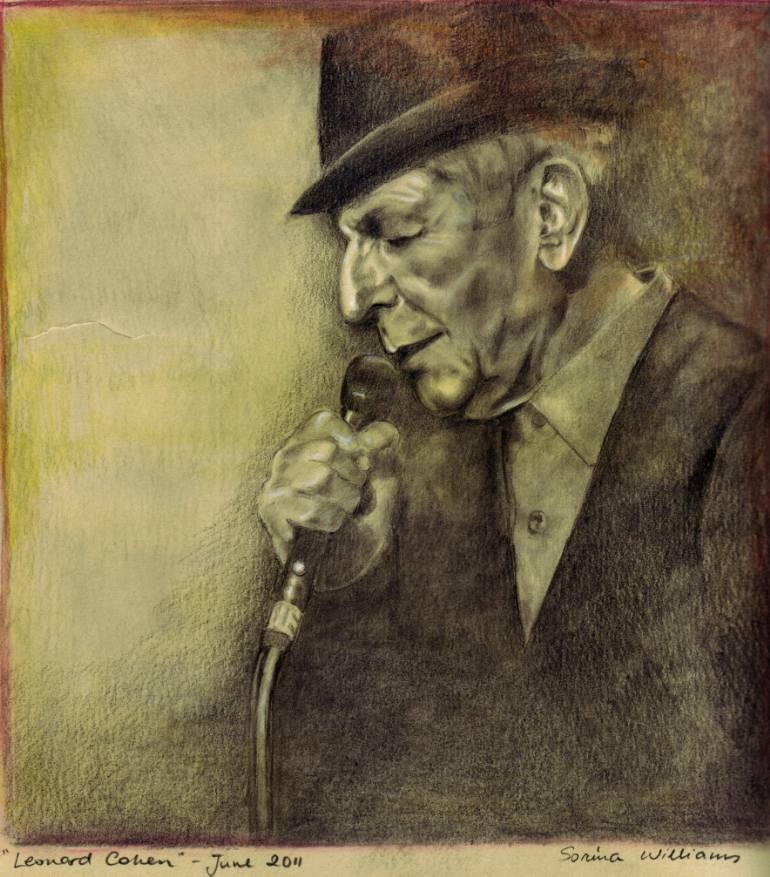The Kashmir Files – Bloodied and Gory, Sold out to RSS-BJP Agenda
This article was first published on February 15, 2022
‘The Kashmir Files’, Desperate Attempt to Polarize Votes to Push for BJP Victory
Subscribe, Like, Share…be the Voice of Free Press
Edited By Adam Rizvi, New Jersey, 15th Dec. 2021, TIO: Between November and December, filmmaker Vivek Agnihotri kickstarted the pre-launch publicity of his film ‘The Kashmir Files’ in the USA.
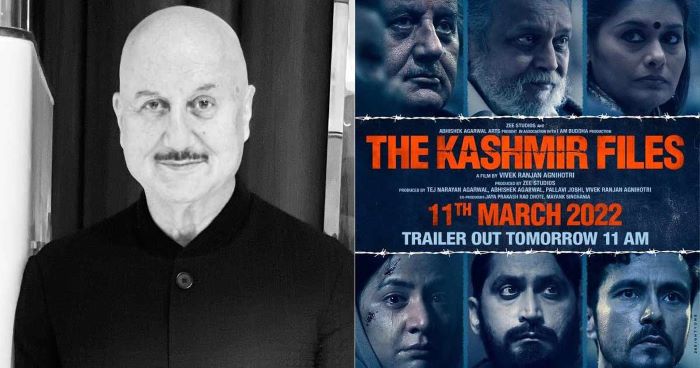
Before the shows, several posters screaming ‘Sold Out’ were posted in local desi media, especially in New Jersey. It came as no surprise that the filmmaker who has been for years, forwarding Indian prime minister Narendra Modi’s Hindutva agenda, has used his film to demonize Kashmiri Muslims. The pre-launch screening only proved that if there was anything that was ‘sold out, it was the filmmaker’s mission to prop the Modi government’s agenda to polarize India, just before the all-important Indian elections. The film is due to be strategically released on January 26, days before the UP elections, to be announced in February 2022.
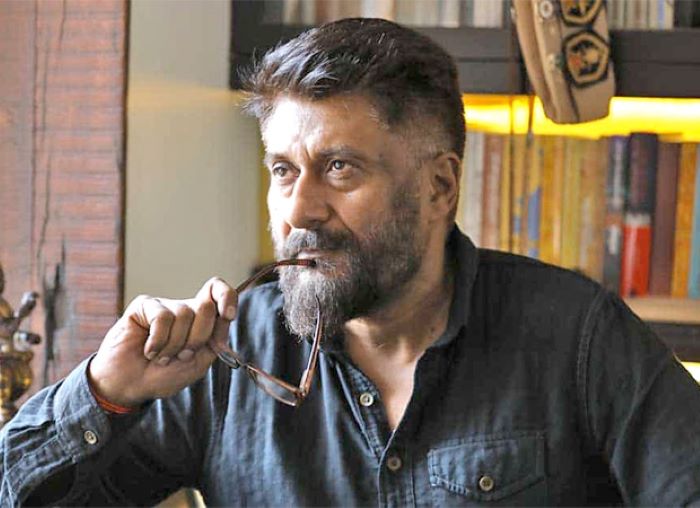
Since the entry to the screening of the controversial film at theaters mostly owned or managed by Indian Americans was by invitation only, it’s a matter of conjecture then as to what the organizers actually sold!

The preview showed nothing more than a sequence of twisted facts, laundering and exonerating the acts of the then Governor of Jammu and Kashmir, Jagmohan Malhotra, under whose watch the first exodus of Kashmiri Pandits in the valley happened in January 1990. Why did the pre-release happen in the US before its official release in India? Because some of the biggest cheerleaders and fundraisers of the Bharatiya Janata Party (BJP) and the Rashtriya Swayam Sewak (RSS) come from the Indian diaspora in the US.
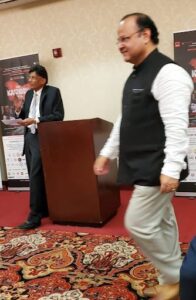
Also Read: Webinar Discusses Unique Dimensions of Kashmir Situation
The film’s narrative is set around the exodus of the three million Kashmiri Pandits from the Kashmir Valley in January 1990, supposedly to highlight the plight of thousands of them “forced” to flee their hometowns and forced to live the life of a refugee since the then. The dangerous trend however is that the film, in line with the right-wing Hindutva agenda, hopes to seek sympathy for the Pandits by demonizing the #Kashmiri Muslims.
Decades of insurgency and political callousness have reduced the beautiful, enchanting Kashmir valley into a bloodied mess, hurting both the Kashmiri Pandits, who made up about 5% of the population, before the exodus and the Kashmiri Muslims made up to 95% of the population. The Kashmir issue can therefore be seen through the troubled lenses of the Kashmiri Pandits who fled the valley in January 1990 or through the eyes of the Kashmiri Muslims, who continue to stay put in the valley. They are crushed heavily between the Indian armed forces and the insurgents, for over three decades with no resolution in sight.

Also Read: Lift Kashmir lockdown, world leaders implored
Depending on which side of the fence you are viewing the tragedies from, there will be an entirely different perspective. BJP and its allies, while totally twisting the narrative, refuse to acknowledge that the exodus happened when the National Front headed by prime minister VP Singh, supported by Atal Bihari Vajpayee led BJP was in power. Not the congress or any other opposition party, as claimed by the propaganda network of the BJP.

One such narrative, which is not supported by historical facts, is the story of Kashmiri Pandits being persecuted out of the valley by their next-door Kashmiri Muslim neighbors. Leading to the exodus. The Kashmiri Muslims insist that the exodus was a “concentrated effort by the then governor of Jammu and Kashmir, Jagmohan Malhotra, to first clear the Pandits from the valley, before turning the guns on their vulnerable selves.
Also Read: Will not disappoint people of Kashmir at UNGA, vows Pakistan PM Imran Khan

The Kashmiri Pandit story itself can be viewed from two different perspectives. Well-known filmmaker Vidhu Vinod Chopra, a Kashmiri Pandit himself, who has crafted several hits like 1942 – A Love Story, Munnabhai MBBS, Three Idiots, among others, chose to make a love story, with the exodus as the backdrop. The film ‘Shikara’ bombed at the box office, but with its sensitive portrayal of tragedies surrounding both the exodus and how highly educated Kashmiri Muslims were being forced by their circumstances to pick up the guns, won hearts.
Also Read: Kashmir is Pakistan’s ‘jugular vein’: Prime Minister Imran Khan
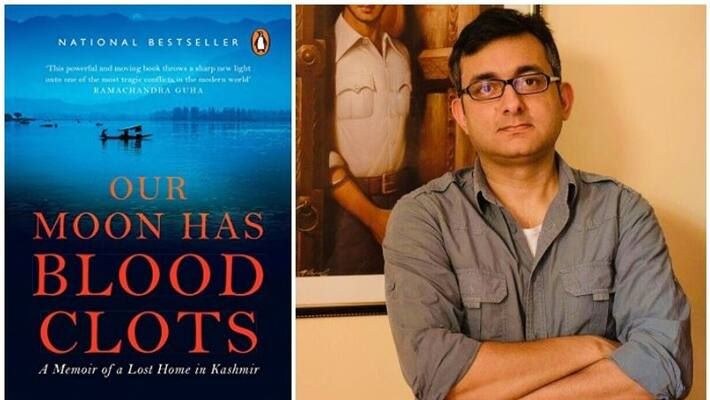
Rahul Pandita, who wrote ‘Our Moon has blood clots, A Memoir of a Lost Home in Kashmir
According to writer Rahul Pandita, who wrote ‘Our Moon has blood clots, A Memoir of a Lost Home in Kashmir’, which was made into ‘Shikara’, several Kashmiri Muslim youth reached out to him, after the movie. Though they were either not born, or were too young during the exodus, apologize on behalf of their parents, who probably did not do enough to stop the exodus.
A Kashmiri Pandit himself, whose own brother was killed by insurgents, Pandita is one of those thousands who only want their tragedies to be acknowledged. So they can bury their painful pasts which they have carried long enough and move on.
Also Read: Kashmir integral part of India, welfare lies in integration: Muslim body

There are thousands of others who hold protests in January every year to remind the world of their exodus, nursing hopes of returning to the valley soon. It is this group that has been represented by ‘Kashmir Files’, in an effort to pick at old scabs, in the hope to provoke more bloodshed, before the UP elections. This is also the group, which has been exploited by several political parties, especially the BJP. One of Prime Minister Narendra Modi’s many electoral promises was to facilitate the return of the Kashmiri Pandits back home, despite the fact that the memories of the peaceful valley they left behind bear no resemblance to the bloodied valley that years of insurgency have reduced it to.
Also Read: Imran warns of ‘direct military confrontation’ over Kashmir
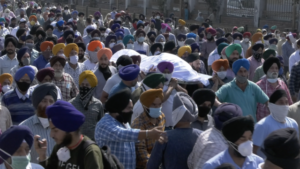
India has suffered through several tragedies since its independence in 1947. The Kashmiri Pandit exodus, therefore, needs to be studied in this context, whilst keeping the tragedy surrounding Kashmiri Muslims as well.
Kashmiri Hindus and Kashmiri Muslims despite the religious differences had more in common between them than with the rest of the country, according to Dr. Faisal Shah, based in New Jersey. Their unity was considered an epitome of communal harmony by Mahatma Gandhi, who had hoped it to be replicated throughout the country.
Also Read: Imran Khan: The World Can’t Ignore Kashmir. We Are All in Danger.
The tragedies surrounding both the Kashmiri Pandits and Muslims, need to be studied with a neutral perspective, which Vivek Agnihotri,
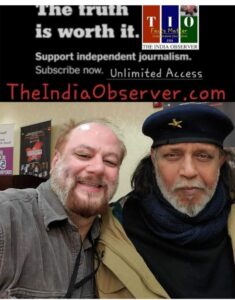
with his leanings toward the BJP and its Hindutva agenda, is not expected to have.
Consider the following facts.
About 399 Kashmiri Pandits, many of them government officials, including bureaucrats, law officials, and politicians, were killed between 1989 – 2011, in insurgencies in Jammu and Kashmir (J&K), 357 of them in the first year of the insurgency itself. The terror outfits who had acknowledged the brutal attacks had claimed that the killings had less to do with their religious identity and more to do with their loyalty to the Indian state.
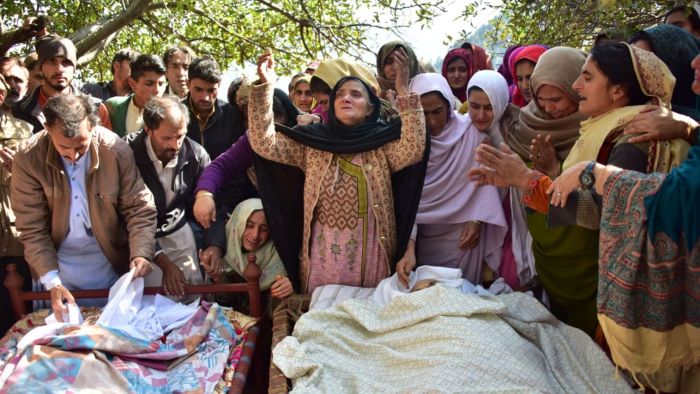
After almost 18 years of gun silence, a Srinagar-based chemist was shot dead by militants in October this year. The family of the 68-year-old Makhan Lal Bindroo was one of 808 Pandit families who had refused to leave the valley during the exodus.
The attack could have been a consequence of the extreme anger brewing in the valley, according to Sanjay Tickoo, president of the Kashmiri Pandit Sangharsh Samiti (KPSS) in Srinagar. After J & K was stripped of its constitutional autonomy on August 5, 2019, followed by an overnight brutal, inhuman lockdown in the state with no media allowed to cover and no internet and Kashmiri leaders were put under house arrest.
Also Read: Avoid escalation in Kashmir: UN
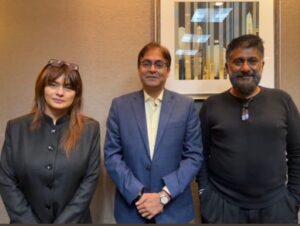
However, assailants had also shot and killed another Hindu man, a street vendor from Bihar, and in a separate shooting, a native Muslim taxi driver on the same day. Two days later, two teachers – one Hindu and one Sikh – too were shot inside a school on the outskirts of Srinagar.
During the same period between 1989 – 2021, an estimated 50,000 plus (many civil rights groups put the figure at a million) Kashmiri Muslim civilians have been killed and 1000’s have gone missing over the years. The exodus paved the way for the Indian security forces to launch an all-out military offensive against the “militants”, who were actually local youths, who had picked up the guns, against an insensitive government.

Also Read: UN Security Council Meets on Jammu & Kashmir behind closed door on abrogation of article 370
The #Gawkadal Bridge massacre on January 21, 1990, when the CRPF gunned down 160 Kashmiri Muslim protesters, within two days of the exodus was the worst ever massacre in the long history of the conflict in Kashmir. Over the years Kashmiri Muslims continued to bear the brunt of the violence unleashed in the valley by Pakistan-backed militants and Indian security forces, killing tens of thousands of them. Over 3000 police and defense personnel too, have been killed in the crossfire between the defense forces and insurgents.
Also Read: U.N. chief invokes Shimla Agreement, calls for ‘maximum restraint’ on Kashmir
The state, now reduced to two Union Territories by the Modi government, is one of the most militarized zones in the world, causing deep anxiety not only to the locals but the forces as well. They spend hours in the bunkers for years, without their families and no source of entertainment, leading to a high suicide rate, according to Dr. Faisal Shah.

Despite the tragedy that has befallen the population of 12.5 million Kashmiris, Kashmiri Muslims have little or no outreach to discuss the inhuman conditions they have been living in, for decades. On the other hand, Kashmiri Pandits, continue to refer to their displacement as a ‘holocaust’, to be discussed as such on every platform available to them, further driving a wedge between the two communities.
Also Read: Few takers for sacrificial goats this Eid in Kashmir

Instead of blaming successive governments who have let them down consistently, they continue to blame the Kashmiri Muslims for their plight. Their social media campaigns center around `returning home’; homes that have either been ransacked or lay in ruins, in a valley that no longer is tranquil. Today it is so bloodied, that Pandits would not risk returning, till normalcy returns to it. Kashmiri Muslims want nothing more than to be rid of the heavy military presence in the valley, and for peace to return to the valley, which is possible if the Pandits return.
Also Read: ‘Several positives’ in Kashmir move, says Karan Singh
‘Kashmir Files’, though claims to be “well researched” deliberately focuses on a totally one-sided narrative of the exodus of Kashmiri Pandits, with no inclusion of the total breakdown in the fundamental rights of the citizens in the valley and the massacres that followed.
One of the guests invited to the screening in New Jersey mentioned how the only intention of the film was to “incite” anger and hate, not just for the militants, or for Pakistan, but for the Kashmiri Muslims as well. By the end of the screening, several members of the audience were busy crying blue murder against all three.

Also Read: Once a terrorist, Lance Naik Nazir Wani to get Ashok Chakra posthumously for Kashmir operations
This film by Agnihotri begins on a violent note, with the killing of an engineer BK Ganjoo, by militants, as narrated by columnist Sunanda Vashisht at a US congressional hearing on human rights in 2019. To deflect the international outrage against the Modi government’s decision to strip J&K of its constitutional autonomy, which she referred to as a “restoration of human rights”.
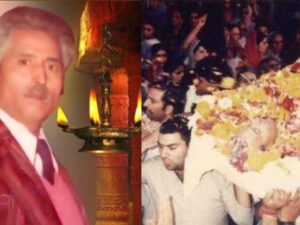
She went on to narrate how Ganjoo would have been alive, “had the neighbors not revealed to his assailants that he was hiding in the rice container, in his attic”. He was then shot, and his wife was supposedly made to eat the blood-soaked rice, before killing her. Ganjoo’s old father, played by Anupam Kher, and his young son are let off. The movie is about the young boy, played by actor Darshan Kumaar, growing up in ignorance of the tragedy, and later discovering the “truth” of his violent background.
Also Read: Govt revokes Art 370 from Jammu and Kashmir, bifurcates state into two UTs
The Jawaharlal Nehru University (JNU) in Delhi, with its dominant Leftist ideology has long been a hunting ground for the Modi government to foment communal hatred and therefore it is no surprise that JNU too is featured in the movie. It is this university that the hero goes to, also plays the daffli, an important symbol of opposition, immortalized by students of JNU, with him even sympathizing with the insurgency in J&K.
All these changes, when one of his professors, played by Pallavi Joshi, coaxes him to visit the valley and meet the character representing, the commander of the Jammu Kashmir Liberation Front (JKLF) ‘Sheikh Hameed’, who is still considered a martyr by many in the valley. An engineer too, with a bright future ahead of him, Hameed took up arms instead, for the liberation of Kashmir and was killed by the Indian army in November 1992.
Also Read: Modi, Trump agree Kashmir is a bilateral issue

The movie then insinuates how professors like Joshi have been planted in JNU to keep the insurgency alive in Kashmir. A journalist most likely inspired by Rahul Pandita has been projected as a plant, working against the government.
The major incidents in Kashmir’s bloody history, where militant groups like the JKLF and the Lashkar-e-Taiba, dressed up as Indian defense forces, lined up their victims and then shoot them point-blank at Sangrampora (1997), Wandhama (1998), and Nandimarg (2003) have been horrendously reenacted in the film to recreate the horror.
Also Read: Got a taste of brute force: Rahul on Kashmir visit
The valley had been shaken up badly with the controversial hanging of Muhammad Maqbool Bhat, Kashmiri pro-independence leader and founder of the JKLF, on 11 February 1984 in Tihar Jail, New Delhi. A judgment passed by Justice Neel Kanth Ganjoo became a trigger point for the Pandits being targeted by the JKLF.
The back-to-back killings of the retired judge in 1989, along with that of the valley’s BJP leader Tika Lal Taploo, journalist-lawyer Prem Nath Bhat, between September and December 1989 caused a panic in the valley. Hit lists of the Pandits, all identified as state players, were in circulation. There was more panic, after a local newspaper published an anonymous message, allegedly from the Hizb-ul Mujahideen, asking Pandits to leave. Not enough investigation was done in the valley to confirm these turn of events.
Also Read: Nothing more ‘anti-national’ than shutting down of democratic rights in Kashmir: Priyanka
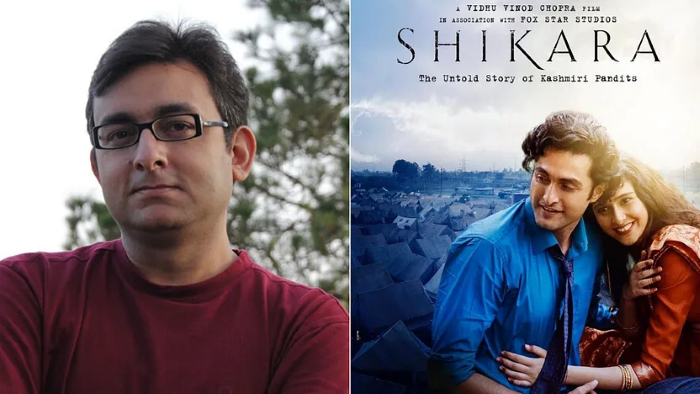
Kashmir Pandits resented the fact that there wasn’t enough support from their neighbors to ensure their safety, which is reinforced throughout ‘Kashmir Files’. Kashmiri Muslims however insist that the mass exodus was carefully orchestrated, so that they can become easy targets for the Indian government, leading to all-round resentment.
The situation became especially grave on January 19, 1991, after the Farooq Abdullah government was dismissed and the governor’s rule imposed by the VP Singh government.
Also Read:Kashmir: Will BBC Once Again Lift The Veil Of Secrecy?
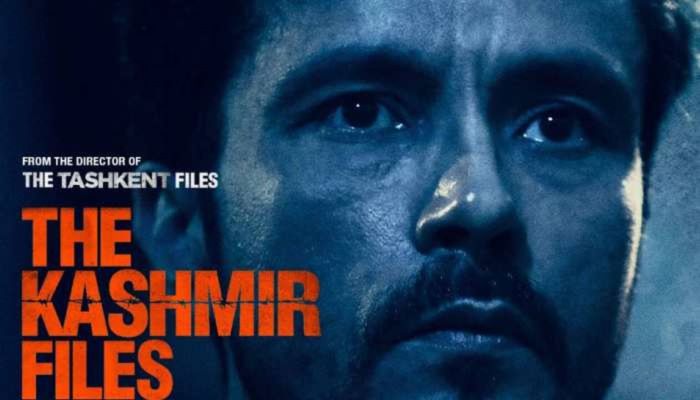
In a controversial decision, which has forever altered the demographics of the state, Jagmohan Malhotra, a bureaucrat turned BJP politician, facilitated the first mass exodus of Kashmiri Pandits from the valley, within just two days of his taking over.
Very little investigation if any has been done to list the factors responsible for the exodus and rectify the situation. There have been no apologies, as both sides suffered heavily
Also Read: Anam Zakaria’s new book uncovers the human dimension of the Kashmir conflict
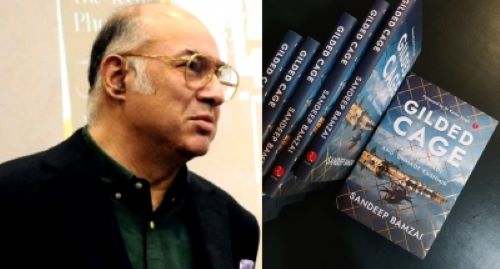
Among those promoting the film are Indo-Asian News Service (IANS) a private news agency operating from Uttar Pradesh India, headed by a Kashmiri Pandit, Sandeep Bamzai, and Sunil Halli businessman who is running local radio and publishing a newspaper in partnership with Nilesh Dasondi catering to the Indian diaspora in New Jersey.
Dr. Surinder Kaul, from Houston, Texas, and part of the Global Kashmiri Pandit Diaspora (GKPD), has on various occasions mentioned that he only wants their issues addressed, that their intention is not to propagate malice towards any religion/community. And yet by referring to the Kashmiri Pandit exodus as a “genocide” and “ethnic cleansing”, and by painting the Kashmiri Muslims as the villains responsible for the ethnic cleansing, he is doing exactly that.
Also Read: Major Gogoi guilty of ‘fraternizing’ with Kashmiri woman, court orders Army to act
In an interview with a local television network in New Jersey, Pallavi Joshi mentioned that Kashmir with its scenic locales was once a haven for Bollywood. But was abandoned when the insurgency took over. And now that J & K’s constitutional autonomy is gone, “they are free to return to claim Kashmir again”, totally missing the reality on the ground. Since its status was revoked, killings of even Indian defense forces have been the highest in more than a decade. Their own crew had to wait a long time to get permission to shoot in the valley which finally happened under heavy security.
Also Read: Rafale jets import, Kashmiri IAF officer Commodore Hilal Ahmad Rather fast-tracked it
In normal times, this movie with all its violent, gruesome, one-sided narrative, with the sole intention of fomenting communal hatred would either be banned or heavily cut at the censor table. But in Modi’s India, with a crucial election around the corner, it is a welcome effort.
Also Read more from this Author: Crushing Democracy Under The Wheels of Arrogance and Conceit
Articles written by contributors have different viewpoints. The views expressed in the articles are the author’s own and not necessarily supported by TIO, The India Observer its affiliates, staff, or the management. Our Articles can be reproduced, with the following conditions, (1) No alteration to the content, (2) Visible, full credit is given to the Author & Editor. (3) Citing, The India Observer, TIO. In the case of online or electronic media, a link to the original article must be given. Rules are strictly enforced. Any questions/Corrections email the Editor at: TheIndiaObserver@gmail.com or Info@TheIndiaobserver.com
All Copyrights reserved. Please be guided.


